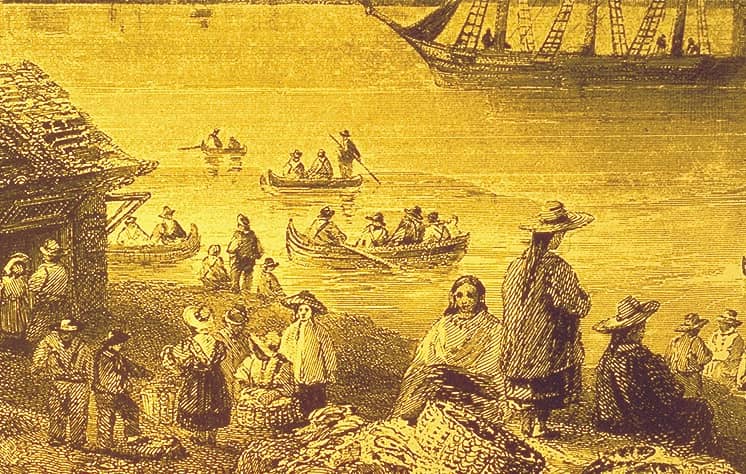
When you glance at Michigan on a map, it’s clear – water is everywhere!
Right at the meeting point of Lake Michigan and Lake Huron, St. Ignace claims a central spot that’s been kind of a big deal for a long time. The Great Lakes were like superhighways back in the day, linking indigenous communities, European traders, and a whole lot of history.
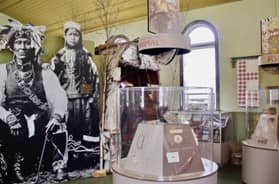
If history floats your boat, make sure to visit the Museum of Ojibwa Culture, located in downtown St. Ignace. Explore fascinating exhibits delving into Ojibwa culture, the era of French contact, and on-site archaeology. The museum stands right beside Father Jacques Marquette’s gravesite, and the location of his 1671 mission. It opens for the season in May.
Why Birchbark?
Long before the French, English, or Americans showed up on these shores, indigenous peoples used canoes made from birch bark. These canoes were integral to their way of life, serving as a means of transportation for activities like fishing, trade, and exploration in the Upper Great Lakes region.
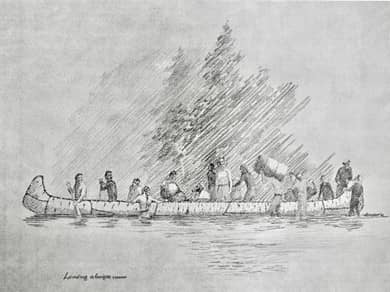
The unique thing about birchbark is its grain – it doesn’t run the length of the tree like in other trees. It goes around the tree. This quirk made it possible to sew together sheets of birch bark, shaping them over frames made of saplings, to create the familiar form we now know as the canoe. Cool, right? It’s like nature’s own design for a smooth ride on the water.
Canoes constructed in this manner were super lightweight, so travelers could easily carry the boats over land when needed. The combination of the wooden frame and birch bark covering made the canoes durable and well-suited for navigating the waterways around the Straits of Mackinac.
It is not surprising that European explorers and fur traders were seriously impressed with these versatile vessels upon arrival. As time passed, modifications were introduced to the traditional canoe design, enabling the addition of a mast and sail. This evolution gave rise to Mackinaw Boats in the late 17th century.
Mackinaw Boat
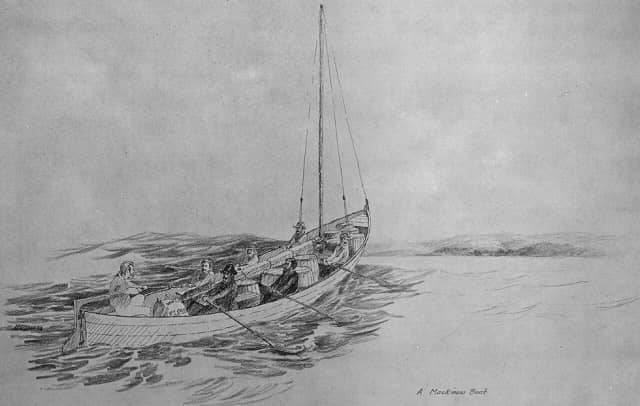
With a compact mast and sail positioned above a hull shaped like a canoe, Mackinaw Boats were able to cover great distances with relative ease. These boats played a vital role in the Straits History, serving multiple functions such as fishing and delivering messages to steamships. They were the official boat of the Great Lakes Fur Trade. Especially valuable in an era with limited harbors and docks, Mackinaw Boats could be easily beached. The two masts doubled as rollers to aid in pulling the boat up a sloping shore.
Sailing the Great Lakes in a Mackinaw Boat must have been exhilarating. Sadly, neither you nor I are likely to ever have that experience because by 1915, Mackinaw Boats were almost entirely replaced by boats with motors. We can see an example, though, right along the Huron Boardwalk in St. Ignace where you’ll find the ‘Edith Jane’, a gaff-rigged Mackinaw Boat built around 1909 by a prominent local boatbuilding family. It is preserved under a shelter right along the pathway. Remarkably, it could be the last surviving non-replica of its kind!
A train in downtown St. Ignace.
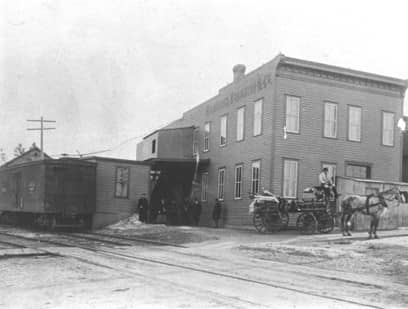
St. Ignace played a key role in facilitating the movement of goods and people between the Upper and Lower Peninsulas during this period.
As railways became common in Northern Michigan, companies looked for ways to transport entire railway cars between Michigan’s two peninsulas. Trains were transported on car ferries from St. Ignace to Mackinaw City, and back again.

SS Chief Watawam
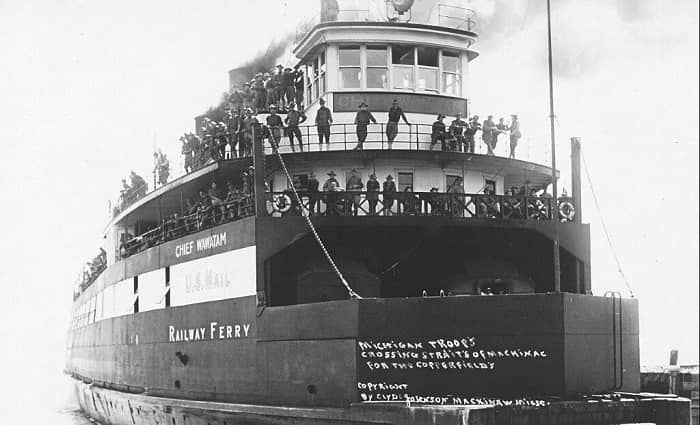
The famous SS Chief Wawatam was a technological marvel in its time. The 338 foot-long behemoth operated in the Straits of Mackinac, beginning around 1911. Named after a distinguished Ojibwa chief from the 1760s, the Chief Watawam is noteworthy as one of the last hand-fired, coal-burning boats in commercial service on the Great Lakes. Its imposing presence, marked by towering smokestacks and a robust superstructure, made it a symbol of industrial prowess during its heyday in the early car ferry era.
Car Ferries
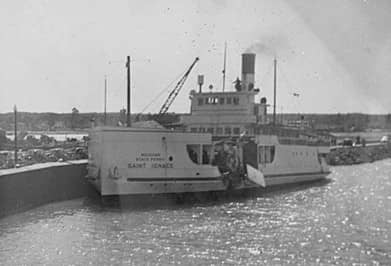
As years passed, the ferries grew larger, and by 1952, the “Vacationland” ferry could transport nearly 150 cars and trucks at one time.
These ferries worked for over three decades, linking the Upper and Lower Peninsulas.
But, as the saying goes, all good things must come to an end. In 1957, the Mackinac Bridge opened, changing the game entirely.
The car ferries were immediately retired, and the bridge took over, carrying more people in a month than the entire fleet did in a year!
Become Part Of Our Story!
If you’re seeking a vacation that’s also a step back in time, St. Ignace is your ticket to a unique and historic experience. The era of canoes, Mackinaw Boats, and ferries may be a memory, but St. Ignace still holds that timeless charm!
Book your stay now to become a part of our story!
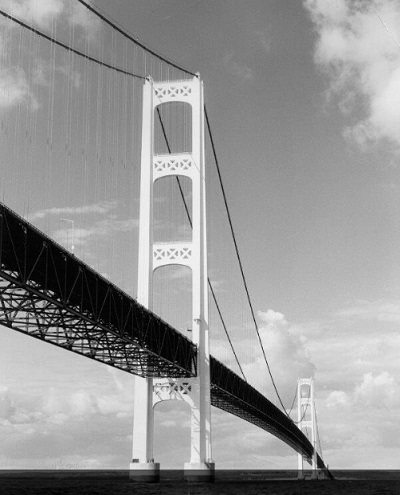
Sign Up For Our Newsletter
Sign up for our newsletter and receive four seasonal editions.
